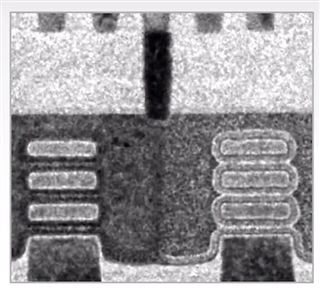Sep 29, 2025
[paper] Gate stack engineering of 2D transistors
Jun 13, 2023
[paper] Microchips for Memristive Applications
Apr 18, 2023
Compact Modeling of 2D Field-Effect Biosensors
1 Pervasive Electronics Advanced Research Laboratory (PEARL), Departamento de Electrónica y Tecnología de Computadores, Universidad de Granada,18071 Granada, Spain
2 Laboratory of Physics of Materials and Nanomaterials Applied at Environment (LaPhyMNE) LR05ES14, Faculty of Sciences of Gabes, Gabes University, Erriadh City, Zrig, 6072 Gabes, Tunisia
Jan 6, 2021
[paper] Perspective of Ultra-Scaled CMOS
Open Access: This article is licensed under a Creative Commons Attribution 4.0 International License
Jan 5, 2021
[paper] Analysis of 2D Transistors
Abstract: In this work, we explore the outputconductance function (G-function) to interpret the device characteristics of two-dimensional (2D) semiconductor transistors. Based on analysis of the device output conductance, the carrier mobility, and the channel as well as contact resistance are extracted. Thereafter the currentvoltage (IV) characteristics of black phosphorous (BP) and MoS2 transistors from room to low temperature are modeled and compared to experiments. The G-function model proves its reliability and accuracy in parameter extraction and IV modeling of 2D transistors, regardless of the n- or p- type, the short- or long-channel and the Schottky or Ohmic contact. Moreover, this works shows its high potential in the device modeling and further circuit design of the 2D transistors, requiring only few parameters and simulating precise IV characteristics.
G-Function Model (for Linear and Non-Linear Cases), the Rch and Rc can be calculated for both the Ohmic and Schottky contacts in the 2D transistors:
Sep 22, 2020
[paper] 2D Charge Density Wave Phases
*Nano-Scale Device Research Laboratory, IISc Bangalore, India

Sep 9, 2020
[paper] Analogue 2D Semiconductor Electronics
2Dipartimento di Ingegneria dell’Informazione, Università di Pisa, Pisa, Italy.
3AMO GmbH, Aachen, Germany.
Aug 28, 2020
TSMC: All the Processes, All the Fabs
Aug 25, 2020
[paper] Native High-k Oxides for 2D Transistors
1Institute for Microelectronics, TU Wien, Vienna, Austria
2Ioffe Physical-Technical Institute, St Petersburg, Russia
Abstract: The two-dimensional semiconductor Bi2O2Se can be oxidized to create an atomically thin layer of Bi2SeO5 that can be used as the insulator in scaled field-effect transistors.
Jul 14, 2020
[paper] An ambipolar homojunction with options
Mar 23, 2020
MicroTec: Semiconductor Process and Device Simulator
Aug 14, 2017
Mini-Colloquium (MQ) on Nanoelectronics
DATE: Saturday Aug. 26, 2016
| Time | Topic | Speaker |
|---|---|---|
| 9:00 - 9:15 | Inauguration | |
| 9:15 - 9:30 | High Tea | |
| 9:30 - 10:30 | Nanotransistors with 2D materials: Opportunities and Challenges | Prof. Navkanta Bhat IISc |
| 10:30 - 11:30 | Revisiting gate C-V characterization for high mobility semiconductor MOS devices | Prof. Anisul Haque East West Univ. |
| 11:30 - 11:45 | Tea | |
| 11:45 - 12:45 | Prof. V. Ramgopal Rao IIT Delhi | |
| 12:45 - 14:15 | Lunch | |
| 14:15 - 15:15 | ASM-HEMT - First Industry Standard Compact Model for GaN HEMTs | Prof. Yogesh Singh Chauhan IIT Kanpur |
| 15:15 - 16:15 | Spintronics - Perspectives and Challenges | Prof. Brajesh Kumar Kaushik IIT Roorkee |
| 16:15 - 16:30 | Tea | |
| 16:30 - 17:30 | Advanced Hetero structure based Nano Scale MOSFETs | Prof. Chandan Kumar Sarkar Jadavpur Univ. |
Website: http://www.iitk.ac.in/nanolab/MQ/index.html
Nov 18, 2016
INFOS 2017 in Potsdam, Germany
Conference Topics:
- High-k dielectrics, metal gate materials and SiO2 for future scaling
- Gate stack materials for high mobility substrates (Ge, SiGe, GaN, III-V)
- Stacked dielectrics for non-volatile memory (flash, nc-Si)
- Dielectrics for resistive switching memories and spin memories
- Dielectrics for DRAM and MIM
- Low-k dielectrics
- Semiconductors on insulators
- Dielectrics for 2D materials, nanowires, 2D devices and carbon-based devices
- Surface cleaning technologies
- Physics and chemistry of dielectrics and defects
- Characterization techniques for dielectrics and interfaces
- Electrical reliability, leakage and modelling
- Modelling of atomic structure of dielectrics, interfaces and thin films
- Topological insulators
- Ferroelectrics and functional oxides
- Dielectrics and thin films for TFT, amorphous or organic devices and photovoltaics
- Dielectrics for photonics and sensing










